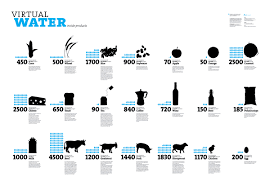
This year, #WorldWaterDay turns the spotlight on making the “invisible” groundwater “visible.” Here is a thread on a new genealogy of the most famous tool to make water visible --- “virtual water.” The virtual water construct has its origins in India and not the Middle East. 



Virtual water entered the contemporary water discourse when the late Professor Tony Allan (inspired by the work of the Israeli economist Gideon Fishelson) formulated the “embedded water” construct to explain water conflicts (or lack thereof) in the Middle East. 

It is also well-known how a serendipitous encounter with a 1992 seminar participant at London’s SOAS inspired Allan to rechristen the rather prosaic “embedded water” as “virtual water.” Allan would later remark, “[f]rom there on it flew” (quoted in Barnaby 2009). 

However, the true origin of the “virtual water” construct is not the seminar hall at SOAS. A full four decades before Allan studied the Middle East, the pioneering Indian ecological thinker, J. C. Kumarappa (1892-1960), had first introduced the virtual water construct. 



In the years following India’s independence in 1947, Kumarappa was especially concerned about how indiscriminate pumping of groundwater for agriculture represents water being “virtually exported” to the metropolitan centers from the countryside.
Kumarappa was an early critic of indiscriminate pumping that the advent of electric pumps engendered. He was also prescient about how the nexus between commercial interests and technocratic water experts would precipitate an existential groundwater crisis.
Here is what he wrote in a 1951 book --- at least forty years before virtual water came to dominate the contemporary water discourse.
@PeterGleick


@PeterGleick



@threadreaderapp
please unroll
please unroll
• • •
Missing some Tweet in this thread? You can try to
force a refresh



